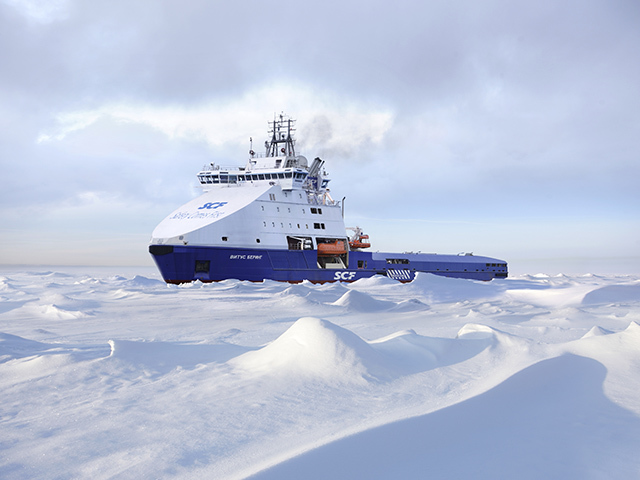
Even as the decision to stop gas supplies to Ukraine aggravates tensions with the UD and Europe, Russia faces a dilemma: it still needs Exxon Mobil Corp., Halliburton Co. and BP Plc to maintain output from Soviet-era oil fields and develop Arctic and shale reserves.
Russia will require Western companies to provide the modern drilling and production gear — and techniques such as hydraulic fracturing — that are essential to unlocking its $8.2trillion worth of barrels still underground.
The cutoff to Ukraine’s gas supply adds another layer of complexity for energy companies navigating a shifting geopolitical landscape in the search for new oil and gas supplies. Decision-makers from some of the West’s biggest oil explorers are gathering in Moscow this week at the World Petroleum Congress to pave the way to new deals.
“There’s certainly a prize there,” said Alexander Robart, a principal at PacWest Consulting Partners LLC, a Houston-based consultant that tracks fracking service providers. “For the big guys, it’s certainly one of the top priority future growth markets they’re looking towards, without a doubt.”
Russia’s latest aggression toward Ukraine can only heighten the political tensions companies already feel as they seek to justify broadening business ties to the country, said Fadel Gheit, an analyst at Oppenheimer & Co.
“It will move the scale a tad against Russia,” Gheit said, raising the chance the US and Europe will push for additional sanctions.
Sanctions have had no impact on working in Russia yet, BP’s Dudley said in Moscow yesterday. The London-based company signed a preliminary agreement last month to evaluate shale oil reserves in the Volgo-Urals region.
“We continue to work and do business as usual,” Dudley said. “It has not affected are activities.”
Russia already is the second-largest market outside North America for fracking, measured by about 1.1 million horsepower of pumps used to blast water, sand and chemicals underground to free trapped hydrocarbons. China ranks first with 3.1 million horsepower. North America is still the world’s fracking king with 19.7 million horsepower.
Through its existing oilfields, Russia is the world’s largest producer of crude, with daily output of 10 million barrels a day last year, according to the EIA. To maintain that, Russia will have to use the latest technology to squeeze oil out of shale rocks in Western Siberia, Bey said.
As a result, Russia’s supply of rock-crushing gear is forecast to double to 2.3 million horsepower by the end of 2018, according to PacWest. That’s assuming that engineers can “crack the code” on the Bazhenov Shale, a massive, hard-to-drain rock formation that lies under Western Siberia’s decades-old conventional oilfields, Robart said.
In May, Total SA partnered up with OAO Lukoil, Russia’s second-largest crude producer, to seek oil in the so called tight-rock oil of the Bazhenov area of Siberia. The deal followed Exxon and Statoil ASA, which already have tight oil ventures with OAO Rosneft in Western Siberia, and Royal Dutch Shell PLC, which partnered with OAO Gazprom Neft.
Without Western expertise and technology, it’s unlikely Russia could sustain its current production levels, much less grow them, David Pursell, an analyst at Tudor Pickering Holt & Co., said in a phone interview. The country has “zero chance” of exploiting deep-water reserves without Western help, he said.
Halliburton, Schlumberger Ltd. and Weatherford Ltd. are some of the energy service companies working to resuscitate aging fields and unlock shale formations in Siberia. They’re counting on exploration and production companies to spend about $30billion a year in Russia, James West, an analyst at Barclays Capital Inc. in New York, said in an e-mail message.
Joao Felix, a spokesman for Schlumberger, declined to comment. Susie McMichael, a spokeswoman for Halliburton, and Wuen Fung Hor, a spokeswoman for Weatherford, were not immediately able to comment.
Schlumberger, based in Houston and Paris, said in April it recently helped a major Russian oil company in western Siberia reduce uncertainty in drilling and field-development by using its down-hole sensors to map exactly where underground fractures were spreading in a horizontal well. Four frack stages were used in the well and monitored from a second well using equipment that hears subtle seismic events underground.
Sales in Russia this year are expected to be “somewhat lower” than initially expected due to a weaker ruble, while activity remains as projected, Schlumberger Chief Executive Officer Paal Kibsgaard told analysts and investors in April.
Weatherford, the world’s fourth-largest oil services provider, has the most at stake among peers with about 5 percent of its sales coming from Russia, Scott Gruber, a New York-based analyst at Sanford Bernstein & Co., wrote March 3 in a note to clients.
In the Russian town of Bugulma, Geneva-based Weatherford announced a partnership last year with an electric-pump plant to make artificial lift systems, which are used to boost pressure and increase output from flagging wells.
Halliburton announced a partnership in February with Gubkin Russian State University of Oil and Gas to provide “state-of- the-art” support, including staff for technical boards and educational material for the school’s unconventional program.
“Halliburton is certainly trying to make a bigger play” in Russia, PacWest’s Robart said.
Russia has gotten more political attention for its natural gas production because it’s the main supplier of gas to Europe through Ukrainian pipelines. But most of the nation’s hydrocarbon revenue is derived from oil, Robart and Bey said.
Rex Tillerson, Exxon’s chief executive officer; Robert Dudley, CEO at BP; and Maria das Gracas Foster, head of Petroleo Brasileiro SA are among the many energy chiefs expected to speak at this week’s conference in Russia.
After the uncertainty created by its conflict with Ukraine, Russia will have done all it could to make sure all the big players come to its conference, “in order to make a show that, ‘Hey, we’re serious about working with you guys,’” Robart said.